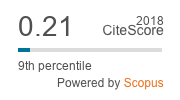Considerações Sobre Variáveis Envolvidas Na Interação Pais-Criança
Résumé
RESUMO - O presente artigo faz uma revisão de pesquisas publicadas na área de psicologia do desenvolvimento infantil, focalizando a relação e a interação mãe-pai-criança, bem como as similaridades e diferenças no comportamento de ambos os pais em relação à criança, durante os primeiros anos de vida. Classe social, escolaridade, ambiente físico, sexo e ordem de nascimento, são algumas das variáveis focalizadas em estudos sobre o tema, nos últimos dez anos. Além disto, são mencionadas algumas considerações sobre aspectos metodológicos no estudo da relação pais-criança.
Téléchargements
Références
parents versus siblings: A behavioral analysis. Child Development, 53, 643-
650.
BELSKY, J. (1979). Mother-father-infant interaction: A naturalistic observational
study. Developmental Psychology, 15 (6), 601-607.
BELSKY, J. (1981). Early human experience: A family perspective. Developmental
Psychology, 17, 3-23.
BLURTON-JONES, N, (1981). Características do estudo etológico do comportamento
humano. Em N. Blurton-Jones (Ed.). Estudos etológicos do comportamento
da criança. São Paulo: Pioneira.
BRONFENBRENNER, U. (1977). Toward and experimental ecology of human
development. American Psychologist, 32 (7), 513-530.
CLARKE-STEWART, K. A. (1978). And daddy makes three: The father's impact on
mother and young child. Child Development 49, 466-478.
CLARKE-STEWART, K. A., VANDER STOPED, L., & KILLIAN, G. (1979). Analysis
and replication of mother-child relations at two years of age. Child Development,
50, 777-793.
CLARKE-STEWART, K. A., UMEH, Ð’. J., SNOW, M. E., & PEDERSON, J. A. (1980).
Development and prediction of children's sociability from 1 to 2 1/2 years.
Developmental Psychology, 16, 290-302.
CLARKE-STEWART, K. A., & HEVEY, С. М. (1981). Longitudinal relations in
repeated observations of mother-child interaction from 1 to 2 1/2 years.
Developmental Psychology, 17 (2), 127-145.
FAGOT, B. I. (1 978), The influence of sex of child on parental reactions to toddler
children. Child Development, 49, 459-465.
FIELD, T. (1978). Interaction patterns of primary versus secondary caretaker
fathers. Developmental Psychology, 14, 183-184.
GREEN, J. A., GUSTAFSON, G. E., & WEST, M. J. (1980). Effects of infant
development on mother-infant interactions. Child Development, 51,199-207.
GUNNAR, M. R., & DONAHUE, M. (1980). Sex differences in social responsiveness
between six months and twelve months. Child Development, 51, 262-265.
HARMON, D., & KOGAN, K. L. (1980). Social class and mother child interaction.
Psychological Reports, 46, 1075-1084.
KORNER, A. F. (1974). The effect of the infant's state, level of arousal, sex and
ontogenetic stage on the caregiver. Em M. Lewis & L. A. Rosenblum (Eds.). The
effect of the infant on its caregiver. N. York: Wiley.
LAMB, M. E. (1976). Interactions between eigh-month old children and their
fathers and mothers. Em M. E. Lamb (Ed.). The role of the father in child
development. N. York: Wiley (a).
LAMB, M. E. (1976). Parent-infant interaction in eight-month-olds. Child Psychiatric
Human Development, 7, 56-63 (b).
LAMB, M. E. (1976). Interaction between two year-olds and their mothers and
fathers. Psychological Report, 38, 447-450 (c).
LAMB, M. E. (1976). The role of the father: An overview. Em M. E. Lamb (Ed.). The
role of the father in child development. N. York: Wiley (d).
LAMB, M. E. (1 977). Father-infant and mother-infant interaction in first year of life.
Child Development, 48, 167-181 (a).
LAMB, M. E. (1977). The development of mother-infant-and-father-infant attachments
in second year of life. Developmental Psychology, 13, 637-648 (b).
LAMB, M. E. (1977). Reexamination of the infant social world. Human Development,
20, 65-85 (c).
LAMB, M. E. (1 978). Interaction between 18 month-olds and their preschoolaged
siblings. Child Development, 49, 51-59.
LAMB, M. E. FRODI, A. M., HWANG, С P., FRODI, M., & STEINBERG, J. (1982).
Mother-and-father-infant interaction envolving play and holding in traditional
and non-traditional Swedish families. Developmental Psychology, 18 (2), 215-
221.
LAWSON, A., & INGLEBY.J. D. (1974). Daily routines of preschool children. Effects
of age, birth order, sex and social class, and developmental correlates.
Psychological Medicine, 4, 399-415.
LYTTON, H. (1973). Three approaches to the study of parent-child interaction:
Ethological, interview and experimental. Journal of child Psychology and
Psychiatry, 14, 1-17.
LYTTON, H. (1976), The socialization of two-year-old boys: Ecological findings.
Journal of Child Psychology and Psychiatry, 17, 287-304.
LYTTON, H. (1979). Disciplinary encounters between young boys and their mothers
and fathers: Is there a contingency system. Developmental Psychology, 15,
256-268.
MARGOLIN, G., & PATTERSON, G. R. (1975). Differential consequences provided
by mothers and fathers for their sons and daughters. Developmental Psychology,
11, 537-538.
MARTIN, J. A. (1981). A longitudinal study of the consequences of early motherinfant
interaction: A microanalitic approach. Monographs of the Society for
Research in Child Development, 46 (3), Serial n.° 190.
NOLLER, P. (1980). Cross-gender effect in two-child families. Developmental
Psychology, 16 (2), 159-160.
PAKIZEGI, B. (1978). The interaction of mothers and fathers with their sons. Child
Development, 49, 479-482.
PETERS, D. L., & STEWART, R. B. (1981). Father child interactions in a shopping
mall: A naturalistic study of father role behavior. The Journal of Genetic
Psychology, 138, 269-278.
ROTH BART, M. K., & MACCOBY, E. E. (1966). Parents differential reactions to sons
and daughters. Journal of Personality and Social Psychology, 4, 237-243.
SMITH, P, K., & DAGLISH, L (1977). Sex differences in parent and infant behavior in
the home. Child Development, 48, 1250-1254.
THOMAS, E. A., & MARTIN, J. A. (1976). Analysis of parent-infant interaction.
Psychological Review, 83, 141-156.
VANDELL, D. L. (1979). A microanalysis of toddlers social interaction with mothers
and fathers. The Journal of Genetic Psychology, 134, 299-312.



